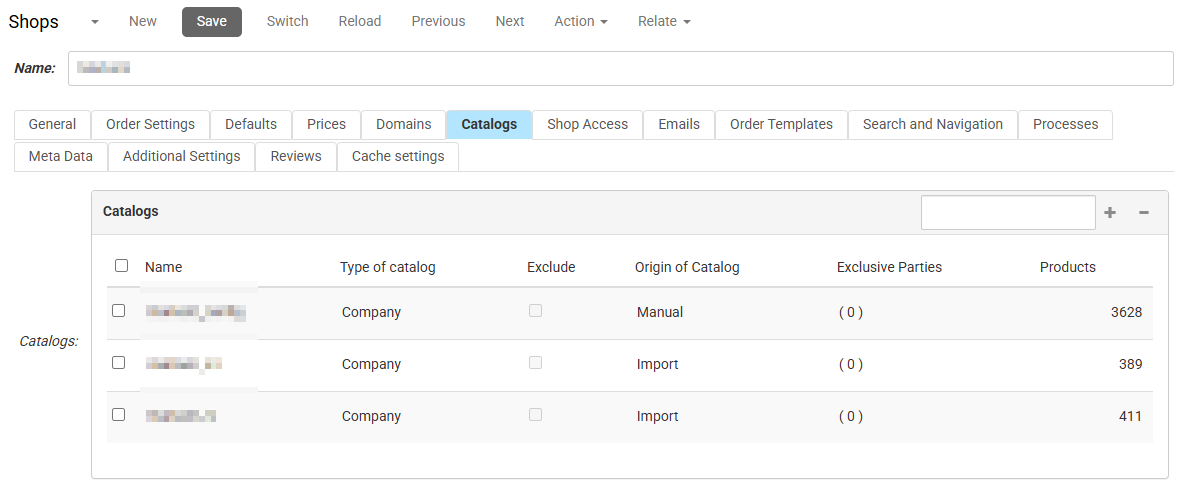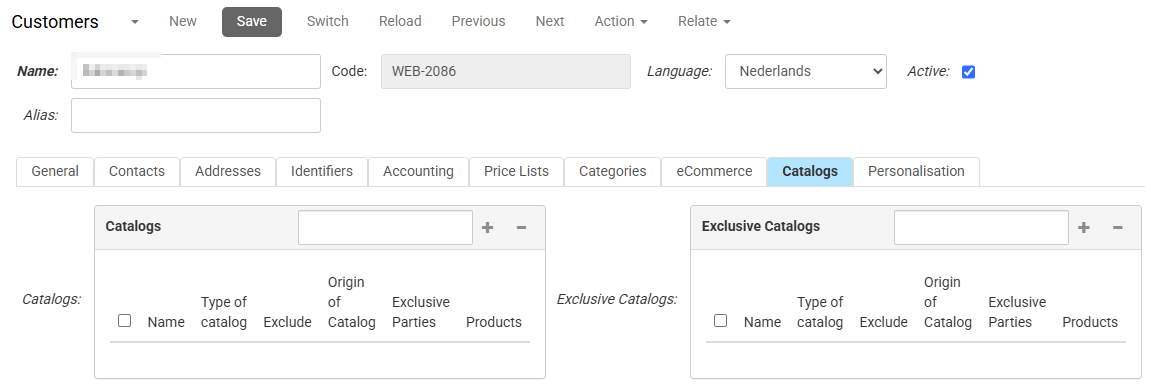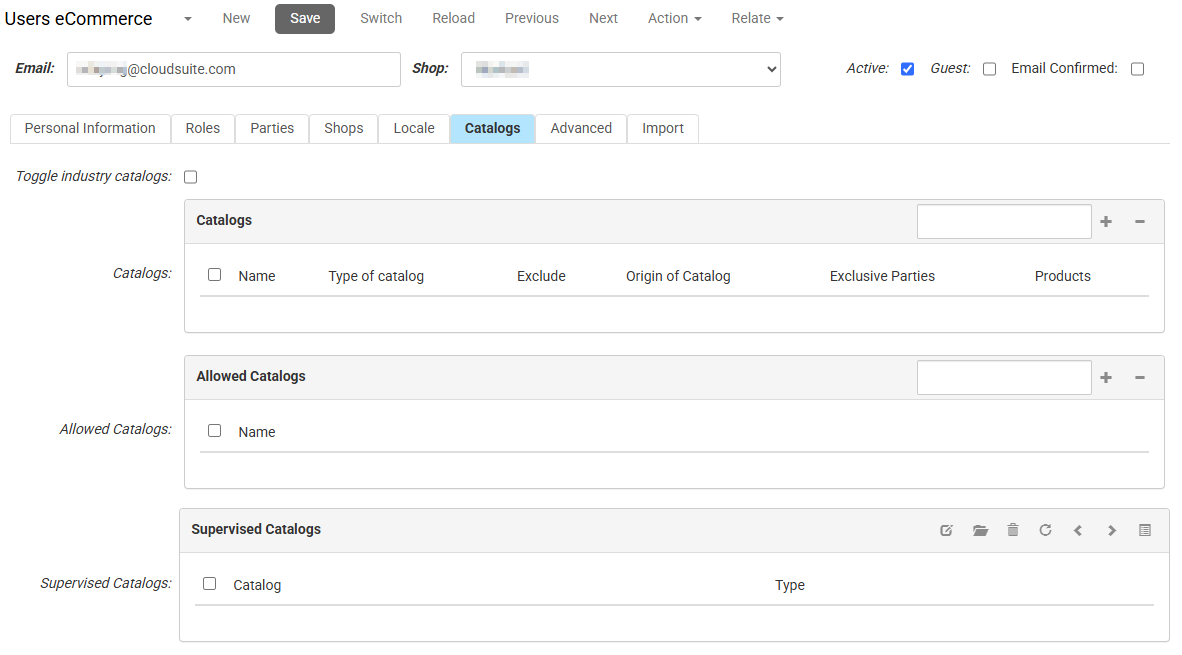Using Catalogs
Catalogs affect the products and therefore the trees which are presented before and after login. Catalogs can be linked to shops, customers, and users.
Shop
Multiple catalogs can be linked to a shop. Customers without their own linked catalogs will see all products in the shop catalogs (with the exception of any products included in any catalog which is marked as being exclusive to a different party).
There are 2 ways to overrule the standard catalogs of the shop within the shop parameters:
- When multiple domains are used within the shop, you can overrule the catalogs for a specific domain. In this manner you can create subshops with a limited number of products.
- When multiple languages are implemented in the shop, you can overrule the catalogs for a specific language. In this manner you can exclude products which cannot be sold in specific countries.

Customer
Multiple catalogs can be linked to a customer to overrule the shop catalogs. These can be standard catalogs listing products that are visible to the customer, or they can be catalogs that are marked (in the catalog details) as exclude, meaning that the products in the catalog will not be shown to customers who are linked to it.
In the customer details you can also set one or more particular catalogs as exclusive to that customer, extending the shop catalogs for the customer. As a side effect, the products in the catalog are not visible to other customers (even when they exist in a shop or customer-specific catalog).

User
Catalogs linked to a user will overrule or restrict the catalogs of the party and those of the shop.
A user can also have one or more allowed catalogs. The products in an allowed catalog are not initially visible to the user, but a list box with these catalogs will be displayed next to the search box. Selecting one of the allowed catalogs displays the products in it and the tree will be modified to the available products.
Finally, custom catalogs can be added to the user for supervisor authorization. If the user orders a product from a supervised catalog, an authorization request is sent to the supervisor who then confirms the order.
